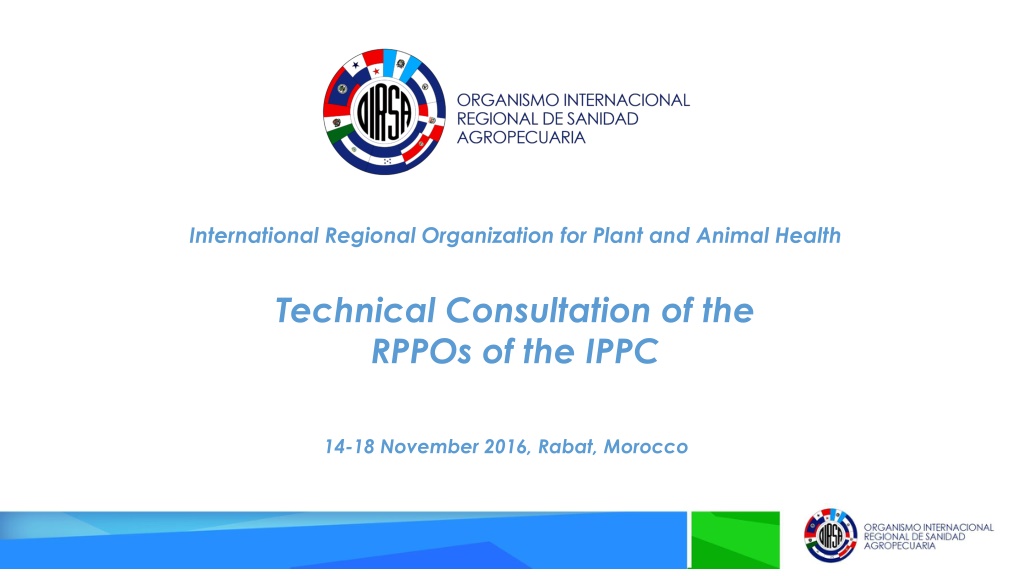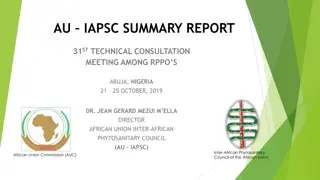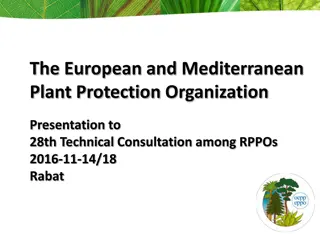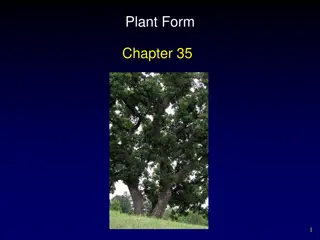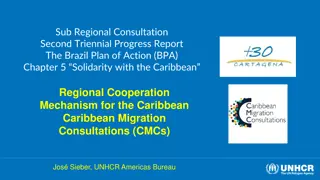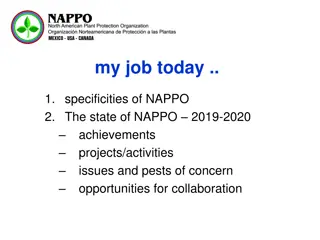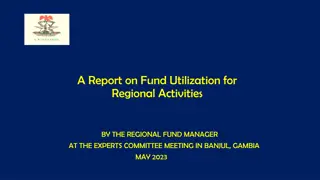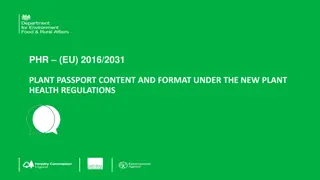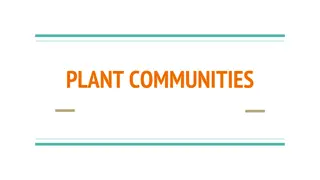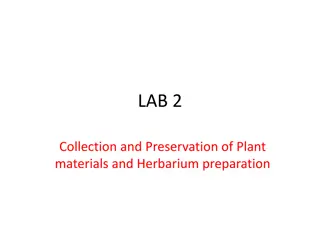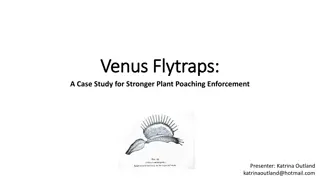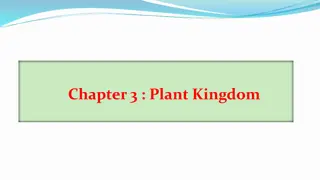Overview of International Regional Organization for Plant and Animal Health Technical Consultation
The International Regional Organization for Plant and Animal Health (OIRSA) is a legal entity with Member States in Central America and the Caribbean. Its objective is to assist Member States in developing animal and plant health plans and enhancing quarantine services and food safety. OIRSA's functions include identifying pests posing a threat, promoting common policies, and harmonizing agricultural health legislations. The organization has achieved milestones in technical and capacity development, including virtual training systems and regional pest action plans. Notable emerging pests in 2015-2016 include FOC TR4, coffee berry disease, and pineapple fusariosis.
Download Presentation

Please find below an Image/Link to download the presentation.
The content on the website is provided AS IS for your information and personal use only. It may not be sold, licensed, or shared on other websites without obtaining consent from the author. Download presentation by click this link. If you encounter any issues during the download, it is possible that the publisher has removed the file from their server.
E N D
Presentation Transcript
International Regional Organization for Plant and Animal Health Technical Consultation of the RPPOs of the IPPC 14-18 November 2016, Rabat, Morocco
Specificities of the OIRSA OIRSA is an International Regional Organization with legal status. Its Member States are: M xico, Guatemala, Belice, El Salvador, Honduras, Nicaragua, Costa Rica, Panam and Rep blica Dominicana OIRSA has the following organs: International Regional Committee of Plant and Animal Health (Ministers of Agricultura) Executive Commission (Deputy Ministers), Technical Commission (Plant Health Directors), and Executive Direction The objective of OIRSA is to support the efforts of the Member States to achieve the development of their animal and plant health plans and the strengthening of their quarantine services and food safety OIRSA s major functions are: a) to determine, which pests of phyto and zoo sanitary nature represent real or potential threat to the regi n, b) to promote the adoption of common policies in Plant and Animal Health, food safety and quarantine services for the regi n and the actions to be taken for prevention, control and eradication of pests and c) to promote harmonization of legislations on agricultural health and quarantine services
Technical and capacity development achievement Implementation of the virtual training classroom Establishment of the regional PRA system Establishment of the regional program on climatic variables, and Agricultural Health Strengthen the diagnostic capabilities for Plant Health Programs Automated planning and monitoring system for follow-up of programs and projects Elaboration of a regional and continental quarantine pests action plans for Foc RT4 Development of digital platforms for early pests warning and traceability systems Elaboration of manuals and technical documents for plant health projects
Emerging pest and issues 2015-2016 QUARANTINE PESTS: FOC TR4 F. oxysporum f. sp. cubense COFFEE BERRY DISEASE Colletotrichum kahawae PINEAPPLE FUSARIOISIS Fusarium guttiformis BANANA BUNCHY TOP Babuvirus KAPRA BEETLE Trogoderma granarium TOMATO LEAFMINER Tuta absoluta EMERGING PESTS: SURGHUM YELLOW APHID Melanaphis sacchari PAPAYA MELEIRA VIRUS REEMERGING PESTS: COFFEE RUST Hemileia vastatrix PINE BARK BEETLE Dendroctonus spp COFFEE BERRY BORER Hypothenemus hampei LOCUST Schistocerca piceifrons MEDITERRANEAN FRUIT FLY Ceratitis capitata CITRUS HLB C. Liberibacter asiaticus
Surveillance projects and activities Project: Regional Epidemiological Surveillance System Phytosanitary surveillance of Xylella fastidiosa: Guat, Hond, Phytosanitary surveillance of Foc TR4 in banana production countries Phytosanitary surveillance of HLB in citrus in countries OIRSA countries Phytosanitary surveillance of coffee pests Phytosanitary surveillance of coffee pests Phytosanitary surveillance of native fruit flies: Anastrepha spp.: Mex, Bze, ElS, Pan, mediterranean fruit fly: C. capitata: Mex, Bze, Guat and Hond Phytosanitary surveillance of Surghum Yellow Aphid: Melanaphis sacchari: Mex, Bze, Guat, ElS, Hond, and Nic Phytosanitary surveillance of Surghum Yellow Aphid: Melanaphis sacchari: Mex, Guat, ElS, Hond, and Nic Phytosanitary surveillance of Tomato leafminer: T. absoluta: Pan and Nic Phytosanitary surveillance of Pine Bark Beetle: Dendroctonus spp.: Bze, Guat, Hond
Proposal for further collaboration To strengthen the coordination with other RPPOs and international organizations To participate in the development of phytosanitary topics of international interest, such as: the prevention of the introduction of Foc TR4 of banana and plantain and IPM of HLB in citrus, among others To support the harmonization of agricultural regional legislations To extend trainings on different phytosanitary topics To line up with the topics of interest of IPPC
